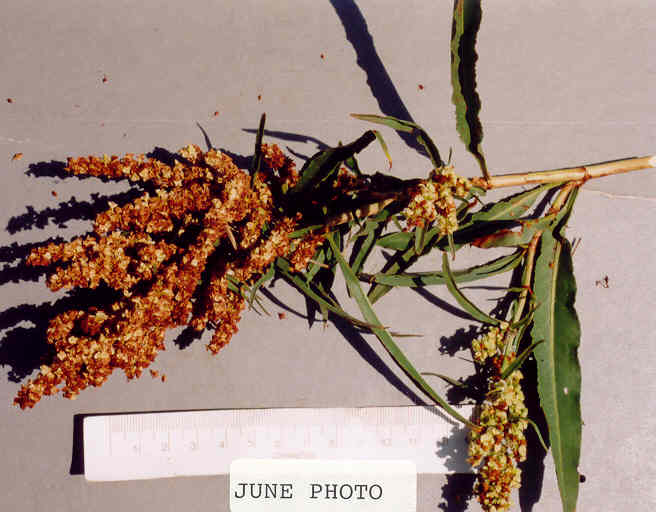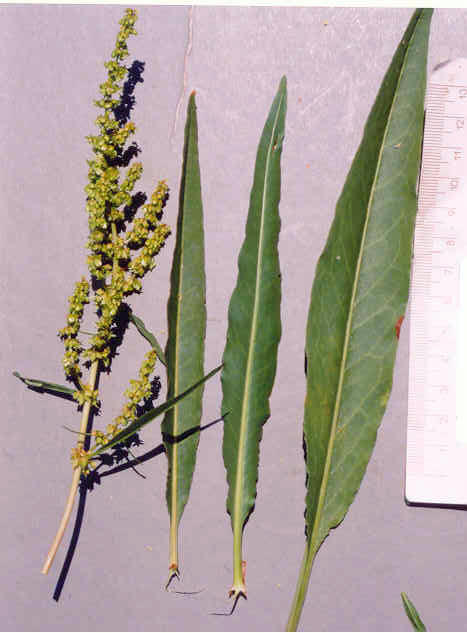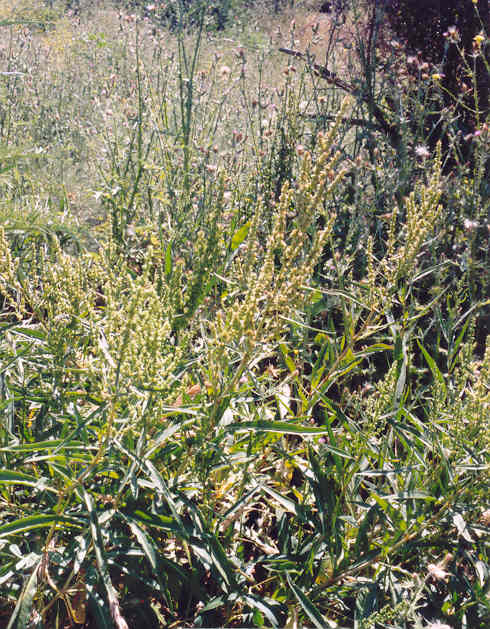
 |
Rumex salicifolius var. denticulatus Torr.Polygonaceae (Purslane Family)NativeCalifornia
Dock
|
Plant Characteristics: Annual, stems ascending to +/- erect; lvs. linear to lanceolate, margin entire, to 18 cm. long, petiole 4 cm.; infl. +/- open, interrupted, 15-30 cm.; fls. both bi- and unisexual on 1 plant; inner perianth lobes 6, persistent, 3-4 mm., outer 3 in fr. +/- inconspicuous, inner 3 enlarged, hardened in fr., teeth near base, short irregular, tubercles inconspicuous or 0; stamens 6, stigmas 3.
Habitat: Moist places 0-3500 m. CA, especially montane and coastal: to Yukon, MT, Colorado, n Mex. Blooms May-Sept.
Name: Rumex, Latin name for sorrel. (Hickman, Ed. 892). Latin, salicis, the willow and Latin, folium, leaf. (Jaeger 104, 226). Salicifolius refers to the willow-like leaves. (my comment). Latin, dentis, a tooth and Latin, latus, the side or flank. (Jaeger 78, 137). Denticulatus refers to the toothed perianth lobes, which are located on the side of the flower. (my comment).
General: Uncommon in the study area, found only at the upper end of Big Canyon near Jamboree Rd. I had looked for this plant for many years, expecting to find it close to a watercourse. Finding it in a relatively dry area was a surprise; although nearby Salix lasiolepis trees indicate a source of moisture. (my comments). Highly variable, even within plants; intergrading complex, warrants detailed study. Except for tubercles, very much like var. salicifolius. R. californicus Rech.f. Toxic in quantity to livestock; seldom eaten. Hickman, Ed. 892, 894.
Text Ref: Hickman, Ed. 894; Munz, Flora So. Calif. 708.
Photo Ref: May 04 # 1A, 2A, 3A, 4A; May-June 04 #11.
Identity: by R. De Ruff, confirmed by John Johnson.
First Found: April 2004.
Computer Ref: Plant Data 550.
Have plant specimen.
Last edit. 8/14/04.
 |
 |
May Photos